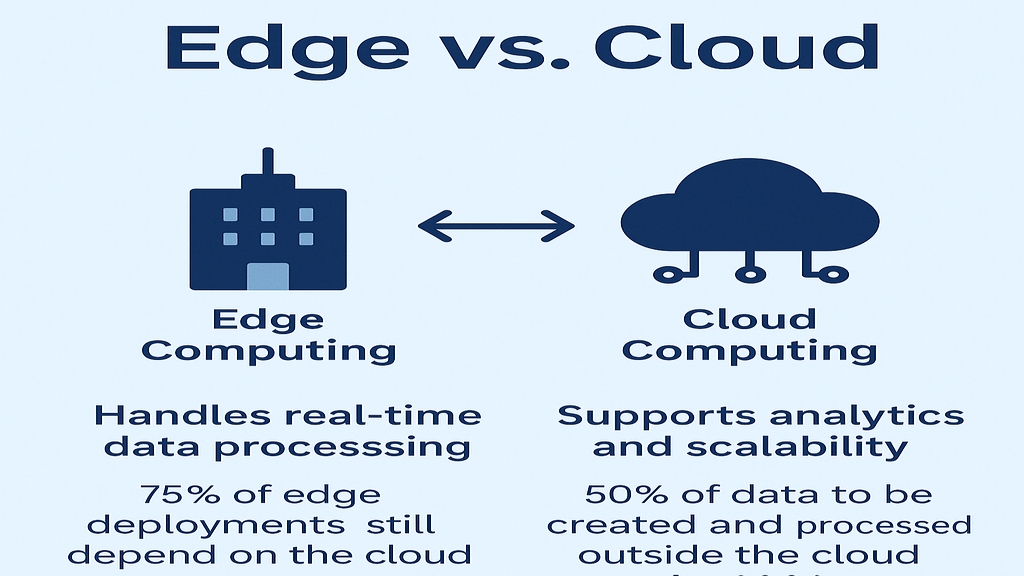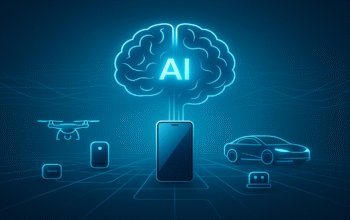In the world of lightning-fast digital trends, people expect mobile applications to meet those expectations by delivering seamless performance, lightning-fast response time, and reliability. Most users demand instant gratification from their applications, ranging from streaming video to gaming, using cloud services, and a great deal more. In response to such expectations, developers, and companies have been making heavy strides into Mobile Edge Computing, considered a new paradigm to help improve applications. So what exactly is Mobile Edge Computing? How will it emerge to play this important role in improving apps? Dive into it more deeply:
Covered Contents
ToggleWhat is Mobile edge computing?
Mobile Edge Computing is a paradigm of distributed computing that brings the computation closer to the end user. Unlike relying on centralized data centers miles away, MEC makes use of edge servers located close to mobile network base stations for local processing, thereby reducing latency and improving the overall quality of service.
In essence, MEC bridges the gap between users and the cloud, enabling faster data processing and smooth interaction. This proximity to the end user is critical for applications that are sensitive to latency like gaming, video streaming, augmented reality, virtual reality, and services of the Internet of Things.
LEARN MORE ABOUT MEC:
What is Mobile Edge Computing? Let’s Explore How It Works!
Why Latency Matters for App Performance
Latency, which is the time it takes for data to travel from a user’s device to a server and back, is one of the primary factors affecting app performance. Bad latency can cause apps to lag, leading to disappointing user experiences and even full-blown app abandonment. For example:
A gaming app with high latency results in delayed responses, frustrating users.
A video streaming app might buffer excessively, leading to decreased user satisfaction.
AR/VR apps become unresponsive and do not present immersive experiences.
Reducing latency ensures MEC renders apps responsive and dependable and thus presents a much better user experience.
MEC and Its Role in Enhancing Application Performance
Mobile Edge Computing enhances app performance in the following aspects:
Reduced Latency:
MEC processes data closer to the user, which reduces the latency required to have data travel. Reduced latency is particularly crucial for applications in real-time, such as live video streaming, online gaming, and navigation services.
Improved Reliability:
MEC shifts many tasks to edge servers. As a result, central servers and mobile devices are less loaded. There are fewer bottlenecks, and the application can be trusted to function with reliability, even when heavily used.
Better Bandwidth Utilization:
MEC optimizes bandwidth by processing data locally and transmitting only necessary information to central servers. This efficiency is crucial for apps with high data demands, such as video conferencing and IoT applications.
Better Security:
This helps in processing and storing sensitive data closer to the user, thereby reducing the risk of data transmission over large distances. This is coupled with local data handling that helps in improving privacy and security, a very critical element of modern app development.
Support for Emerging Technologies:
Such technologies as 5G, AR/VR, and IoT are low-latency and high-speed processing-intensive technologies. MEC provides an infrastructure to support such technologies, thus allowing smooth, innovative app experiences.
Real-World Applications of MEC in Mobile Apps
Gaming: MEC will support ultra-low latency gaming experience, which means that such platforms as Google Stadia and Xbox Cloud Gaming will become commercially viable and competitive.
Streaming Services: Video services such as Netflix and YouTube benefit from faster load times and uninterrupted playback.
Healthcare Apps: Telemedicine and remote health monitoring applications can process critical data locally for timely responses.
Smart Cities: Applications for traffic management, public safety, and energy optimization rely on MEC to make decisions in real time.
Retail: AR-powered shopping apps provide instant feedback and improve user engagement.
Challenges and the Road Ahead
Although MEC comes with a plethora of benefits, it is not free of problems. These include:
Deployment Costs: Installation of edge servers near the mobile base stations involves huge investments.
Interoperability Issues: Achieving seamless integration between the edge servers, central servers, and various devices can be complicated.
Scalability Concerns: As the number of connected devices increases, performance across all users may become unmanageable.
Despite these challenges, the rate of adoption for MEC is accelerating as demand from mobile applications requiring faster, more reliable results grows. As 5G becomes increasingly sophisticated, so will the use of MEC.
CHECK IT OUT: How 5G Will Transform Your Life by 2025
Conclusion
Mobile Edge Computing is changing the face of mobile application’s performance. It gives users high speed, reliability, and efficiency, as computing power is brought closer to the user, reducing latency, bandwidth, and security challenges to allow developers to create user-centric, high-performing applications.
As the digital landscape evolves, embracing MEC will be crucial for businesses that want to remain competitive and deliver excellent app experiences.



